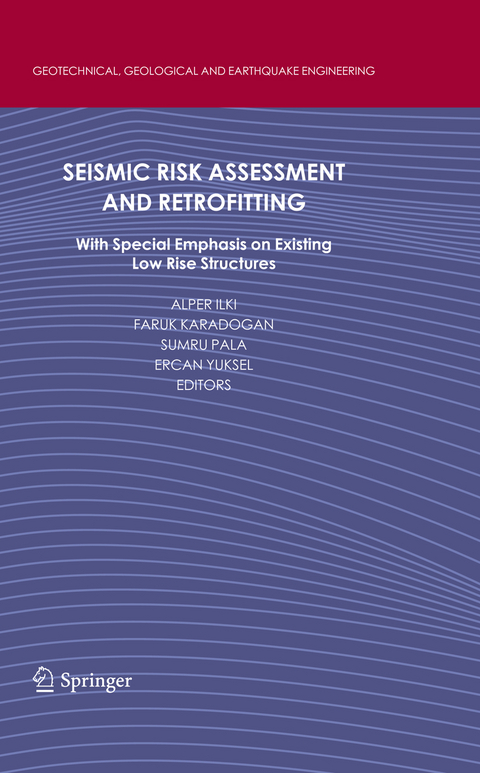
Seismic Risk Assessment and Retrofitting
Springer (Verlag)
978-94-007-3066-3 (ISBN)
Many more people are coming to live in earthquake-prone areas, especially urban ones. Many such areas contain low-rise, low-cost housing, while little money is available to retrofit the buildings to avoid total collapse and thus potentially save lives. The lack of money, especially in developing countries, is exacerbated by difficulties with administration, implementation and public awareness.
The future of modern earthquake engineering will come to be dominated by new kinds of measuring technologies, new materials developed especially for low-rise, low-cost buildings, simpler and thus lower cost options for retrofitting, cost cutting and raising public awareness.
The book covers all the areas involved in this complex issue, from the prevention of total building collapse, through improvement techniques, to legal, financial, taxation and social issues.
The contributors have all made valuable contributions in their own particular fields; all of them are or have been closely involved with the issues that can arise in seismic zones in any country. The recent research results published here offer invaluable pointers to practicing engineers and administrators, as well as other scientists whose work involves saving the lives and property of the many millions of people who live and work in hazardous buildings.
Seismic Monitoring to Assess Performance of Structures in Near-Real Time: Recent Progress.- Dance for Modern Times: Insurance, Economic Stability and Building Strength.- A Critical Review of Current Assessment Procedures.- Risk Management and a Rapid Scoring Technique for Collapse Vulnerability of RC Buildings.- The Importance of Plan-Wise Irregularity.- Advanced Composite Materials and Steel Retrofitting Techniques for Seismic Strengthening of Low-Rise Structures: Review.- A Novel Structural Assessment Technique to Prevent Damaged FRP-Wrapped Concrete Bridge Piers from Collapse.- Strengthening of Low-Rise Concrete Buildings: Applications After Dinar (1995) and Adana-Ceyhan (1998) Earthquakes.- Rehabilitation of Precast Industrial Buildings using Cables to Develop Diaphragm Action.- Vulnerability Evaluation and Retrofitting of Existing Building Heritage: an Italian Research Programme.- Soft-Landing Base-Isolation System.- Development of a New Precast Concrete Panel Wall System Incorporated with Energy Dissipative Dowel Connectors.- Alternative Performance-Based Retrofit Strategies and Solutions for Existing RC Buildings.- FRP Wrapping of RC Structures Submitted to Seismic Loads.- Upgrading of Resistance and Cyclic Deformation Capacity of Deficient Concrete Columns.- Supplemental Vertical Support as a Means for Seismic Retrofit of Buildings.- How to Predict the Probability of Collapse of Non-Ductile Building Structures.- Strengthening of Brick Infilled Reinforced Concrete (RC) Frames with Carbon Fiber Reinforced Polymers (CFRP) Sheets.- Improved Infill Walls and Rehabilitation of Existing Low-Rise Buildings.- How to Simulate Column Collapse and Removal in As-built and Retrofitted Building Structures?.
| Reihe/Serie | Geotechnical, Geological, and Earthquake Engineering ; 10 |
|---|---|
| Zusatzinfo | XIII, 495 p. |
| Verlagsort | Dordrecht |
| Sprache | englisch |
| Maße | 155 x 235 mm |
| Themenwelt | Naturwissenschaften ► Geowissenschaften ► Geologie |
| Naturwissenschaften ► Physik / Astronomie ► Mechanik | |
| Technik ► Bauwesen | |
| Technik ► Maschinenbau | |
| Schlagworte | Concrete • Earthquake • Mitigation • Seismic • Structures |
| ISBN-10 | 94-007-3066-7 / 9400730667 |
| ISBN-13 | 978-94-007-3066-3 / 9789400730663 |
| Zustand | Neuware |
| Haben Sie eine Frage zum Produkt? |
aus dem Bereich


